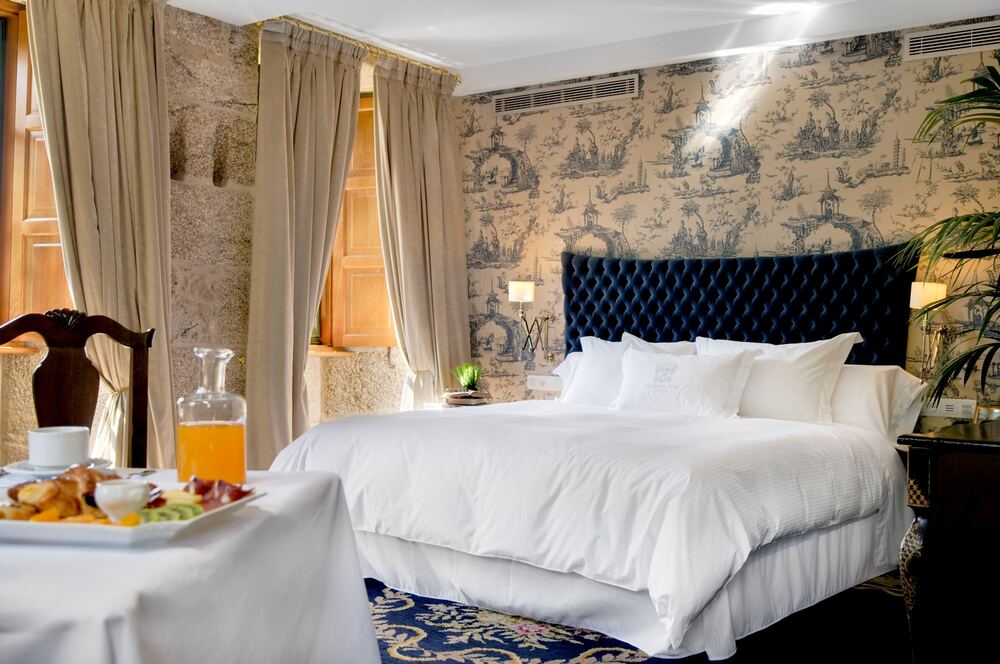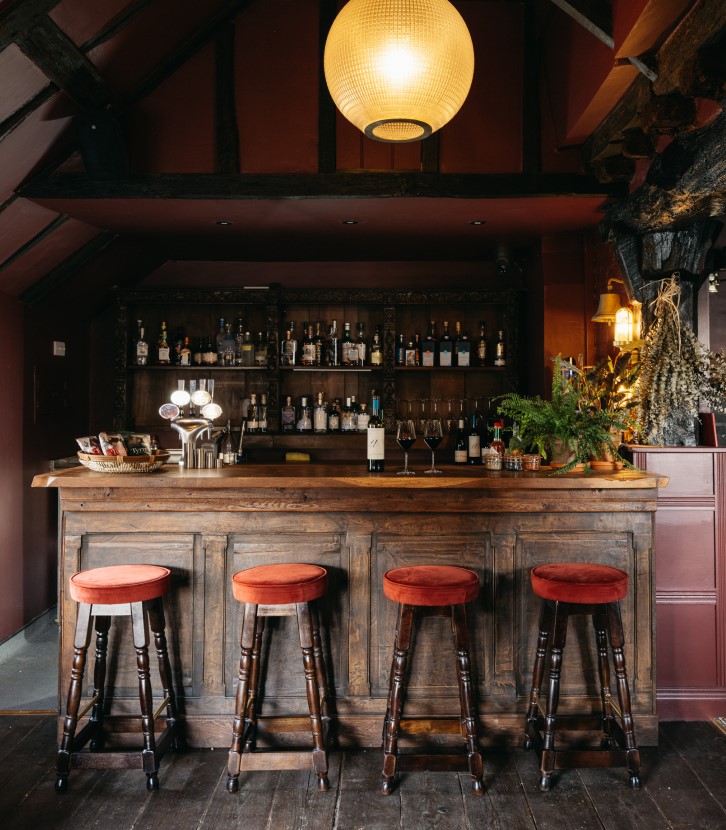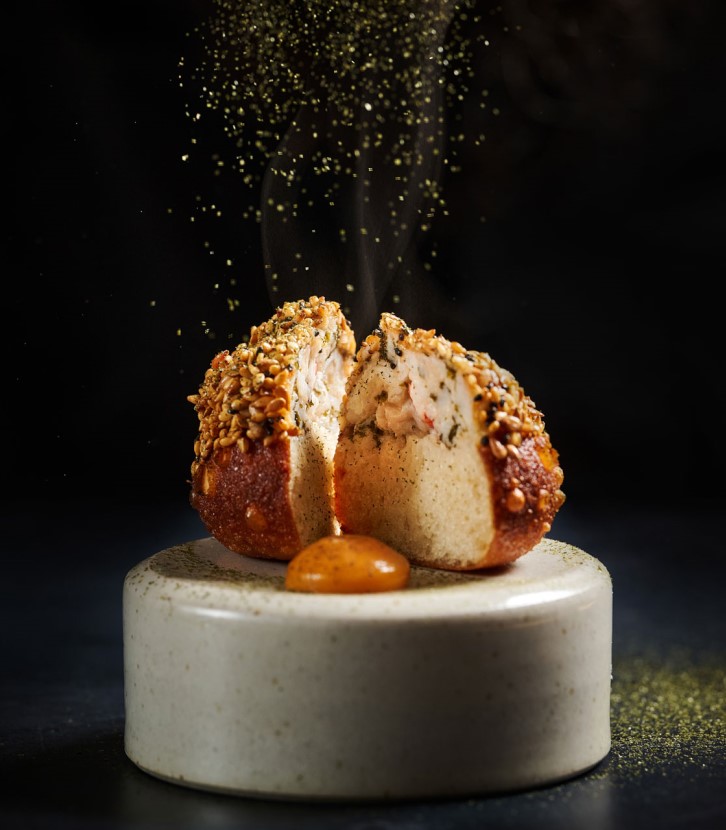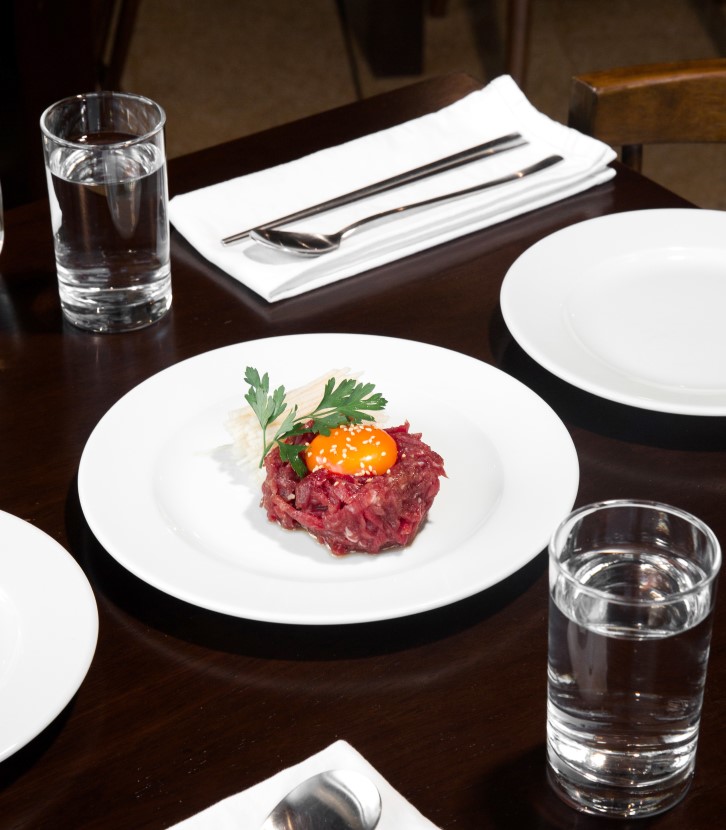They say that you should experience the Camino de Santiago at least once in your life. Whether you’re a believer or not, this pilgrims’ route (‘The Way of St James’ in English) offers a unique and truly memorable experience. And although its religious significance is one of the route’s main elements, the scenery and all the different sights, towns, and cities that you pass through on your journey also add to the journey’s appeal.
In addition to its spiritual connection, the route is teeming with history, monuments, and gastronomic highlights. So, whether you’re travelling by foot, bike, or car, The MICHELIN Guide offers a different way of experiencing the Camino. There are several routes along which you can complete the Camino de Santiago; for our guide we have chosen the traditional route along the Camino Frances (the French Route) from Roncesvalles to Santiago, combining it with suggestions for hotels and restaurants at each stop along the way.
From Roncesvalles to Pamplona
As well as being the most significant route from a historic point of view, the Camino Frances is also one of the best known to pilgrims. Its Spanish section starts in Roncesvalles, in the heart of the Navarra Pyrenees, and wends its way towards Pamplona, the capital of the autonomous region of Navarra. The journey passes the El Molino de Urdániz restaurant, which boasts Two MICHELIN Stars as well as a MICHELIN Green Star. Situated at the heart of the Camino, this rustic yet elegant farmhouse offers a unique surprise tasting menu based on typical produce from Navarra grown in the restaurant’s own kitchen garden. The result is a series of classic and modern dishes that allow guests to experience the history and evolution of Chef David Yárnoz’s cuisine. Situated next to this restaurant, the more informal and great value Origen has received MICHELIN’s Bib Gourmand award and is run by the same chef.
Once you reach Pamplona, Kabo is an absolute must. The restaurant is run by young couple Aaron Ortiz and Jaione Aizpurua (the former in the kitchen, the latter running front of house), whose hard work has a resulted in a MICHELIN Star. The menu here pays tribute to the land by focusing on seasonal ingredients sourced from local kitchen gardens and small-scale producers. For a more informal meal, you might like to try El Merca’o or Enekorri, two restaurants which pay careful attention to their ingredients. The first is renowned for its pinchos (a kind of tapas) which have a real Basque flavor, while the second boasts an impressive wine list that is constantly evolving. And to conclude your visit, the Eurostars Pamplona hotel is the perfect place to stay, with its combination of modern architecture and a historical location in a city that is well worth a visit.
Arriving in Logrono

Continuing along the Camino Frances and enjoying the fine views along the route, you enter the province of La Rioja. Here, vineyards, valleys, plains, and the historic center of the province’s main town with its distinctive Jacobian past are just some of the highlights on offer. Stopping on Calle Laurel to sample the local pinchos is a popular way to recharge the batteries, but if you prefer to sit down and enjoy a traditional Riojan meal, then La Cocina de Ramón, Umm No Solo Tapas, or Tastavin are all good options.
Haute cuisine is another of Logrono’s attractions. The town offers various restaurants that serve tasting menus, many of which combine local gastronomy with influences from their chef’s home country. At Ajonegro, Mariana Sánchez and Gonzalo Baquedano create fusion cuisine inspired by their native Mexico and La Rioja respectively. Meanwhile, Carolina Sánchez and Iñaki Murua combine local ingredients with Ecuadorian fruit and seasonings at their restaurant Ikaro, focusing on Sanchez’s South American origins and making her the only Ecuadorian chef to hold a MICHELIN Star. At Kiro Sushi, Félix Jiménez, wearing an impressive white kimono, delights guests with his Japanese-inspired cuisine that showcases everything he has learned from master chef Yoshikawa Takamasa.
Archaeology and Gastronomy in Burgos

A Gothic masterpiece and a UNESCO World Heritage Site since 1984, the Cathedral of Santa María La Mayor is one of the main monuments visited by pilgrims when they arrive in Burgos, along with the Monasterio de las Huelgas and the Cartuja de Miraflores. The city center offers various accommodation options that make a good base for exploring Burgos on foot, including the AC Hotel Burgos, with its modern, contemporary design, and the more traditional NH Collection Palacio de Burgos, which has been converted from a 16th-century monastery.
If you’re keen to sample traditional Burgos cuisine, La Favorita, with its internal and external terraces, is the perfect choice, offering an attractive menu that specializes in pinchos and grilled meats. High-end gastronomy in Burgos can be found at Miguel Cobo’s Cobo Evolución restaurant, where the chef takes inspiration from the archaeological site of Atapuerca some 20km from the city. The menu takes guests on a gastronomic journey through the different stages of human evolution (from Africa to Atapuerca, from Altamira to the Neolithic era, and right up to Ancient Rome) and its connection with the environment. The restaurant also shares its premises with the chef’s Cobo Tradición, which focuses on traditional Spanish cuisine.
Traveling Through the Province of Leon

With stops including Mazarife, Astorga, Rabanal del Camino, Ponferrada, and Acebo, the Camino Frances's different stages in the province of Leon boast a whole host of scenic and historic sights. And finding something to eat couldn’t be easier, with a vast range of options for all tastes and budgets. The cuisine at Marcela has a seasonal focus, while Kamín surprises guests with beautifully presented modern dishes that are prepared in an open-view kitchen and are full of intense flavors. If you’re looking for something a little bit special, Pablo and Cocinandos, both awarded One MICHELIN Star, take center stage with their updated regional cuisine made from local ingredients and accompanied by wines from the area.
Continuing to follow the Camino along its final stages, pilgrims arrive in Astorga, renowned for one of the most important works by Gaudí outside Catalonia, namely the Palacio de Astorga. This neo-Gothic building is home to the Museo de los Caminos, which is dedicated to the Camino de Santiago and is a popular attraction for anyone following this pilgrims’ route. Here, a stop at Las Termas to sample its famous ‘cocido maragato’ is a must; this meat and chickpea soup is a typical local dish which can also be enjoyed at Coscolo, situated in the charming nearby village of Castrillo de los Polvazares. In Ponferrada, housed in the Casa de Las Bombas opposite the Museo de los Templarios, restaurant Mu·na has become one of the gastronomic highlights on this route. Here, guests can enjoy updated traditional cuisine which showcases the best seasonal produce from El Bierzo.
In the Land of Galicia

There are three stages along the Camino Frances between Ponferrada and Santiago de Compostela, including stops at Sarria and Melide. These are the busiest sections of the pilgrims’ route and the most beautiful in terms of scenery and natural landscapes. Once in the Galician capital, there are numerous food options on offer with a vast array of regional and international dishes available. If you’re in search of local cuisine with a focus on vegetables, try Pampín Bar, A Horta d’Obradoiro or Don Quijote. If you prefer fish and shellfish, then Mar de Esteiro is an excellent choice. And if you want to sample market cuisine, then Abastos 2.0. Barra and Abastos 2.0. Mesas are ideal.
When it comes to haute cuisine in Galicia, and in Santiago in particular, the name of one woman stands out: Lucía Freitas. For years, this chef has used her hard work and talent to retain a MICHELIN Star at her restaurant A Tafona, where she serves modern, regional cuisine with a focus on the best local ingredients. And if you’d like to sample top-quality cooking without leaving your hotel, the Hotel Spa Relais & Chateaux A Quinta da Auga (with One MICHELIN key) is the perfect choice, with its peaceful surroundings and traditional Galician cuisine on offer in its Filigrana restaurant.
This alternative route along the Camino de Santiago Frances also provides visitors with a chance to disconnect and get away from it all in beautiful natural surroundings. It's a wonderful new way to enjoy a journey that is renowned across the globe and visited by thousands of pilgrims every year.
Hero Image: A 'tarta de Santiago' (© El Fotógastro/Abastos 2.0. Mesas)

















